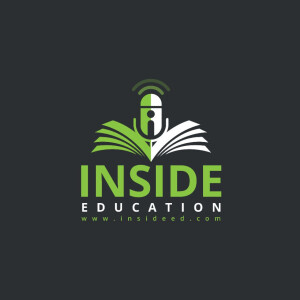
Inside Education 422, How Voice Recognition Software is Changing Teaching (30-10-21)
 2021-10-30
2021-10-30
Presented and produced by Seán Delaney.
Theme tune composed by David Vesey.
On this episode of Inside Education, engineer Patricia Scanlon of Soapbox Labs discusses how improving how well software can recognise children's voices can support how teachers teach, assess and give feedback on reading and enhance equity in the classroom. Among the topics discussed are:
- How children’s voices differ to adult voices
- How voice recognition software has been found to be biased in favour of some populations over others
- How she became interested in applying speech recognition technology to education after watching her daughter experience the limits of educational software when she was learning to read and do mathematics
- Applying speech recognition technology to teaching reading – the software acts like a helpful adult who “listens” to and “assesses” the child’s reading.
- The software is used in dyslexia screeners, reading practice products, fluency assessment products, speech therapy.
- Use of the software at home and in classrooms
- The use of rapid naming as one of a suite of tasks in a screening tool that aims to predict dyslexia in pre-literate children, thus making earlier intervention possible
- The promise of voice recognition software for making school more inclusive for children of all abilities
- Applying the voice recognition software to languages other than English
- How practising reading can be formatively assessed using voice recognition software
- Feedback to encourage the student, to correct a child’s pronunciation of a sound, or to identify errors for the teacher
- Why Soapbox Labs’s niche is with children’s voice recognition software
- How they worked alongside teachers to develop the software
- Collecting data and looking at data privacy
- Future plans for developing the software
More Episodes
Programme 51, Play, and News (27-6-10)
 2010-06-28
2010-06-28
 2010-06-28
2010-06-28
Programme 45, Data Smog, and News (16-5-10)
 2010-05-16
2010-05-16
 2010-05-16
2010-05-16
Programme 36, The Teaching Council (14-3-10)
 2010-03-14
2010-03-14
 2010-03-14
2010-03-14
Programme 33, Spellings and News (21-2-10)
 2010-02-21
2010-02-21
 2010-02-21
2010-02-21
Programme 32, Bullying in Schools (14-2-10)
 2010-02-15
2010-02-15
 2010-02-15
2010-02-15
012345678910111213141516171819
Create your
podcast in
minutes
- Full-featured podcast site
- Unlimited storage and bandwidth
- Comprehensive podcast stats
- Distribute to Apple Podcasts, Spotify, and more
- Make money with your podcast
It is Free
- Privacy Policy
- Cookie Policy
- Terms of Use
- Consent Preferences
- Copyright © 2015-2024 Podbean.com




